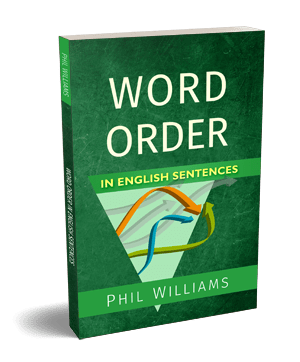
Reaching the end of my series on commas, here’s another brief extract from Advanced Writing Skills for Students of English to look at how commas are used with adverbial phrases.
This fits into my wider guide to commas that I’ve been adding to on the site; you can find the introduction and summary of other articles (with links) all here, in How to Master Commas in Use, so if you haven’t already read that I recommend starting there!
Otherwise, let’s begin…
Using Commas with Adverbs and Adverbial Phrases
Commas often follow adverbs or adverbial phrases used at the start of a sentence. This is done in the same way as using a comma to separate a subordinate clause at the start of a sentence. These adverbials frame the sentence with information that would typically come later (such as time, manner, or a comment), placing information before the main clause:
- In time, we learnt the truth.
- Quick as a flash, she threw the flaming pan into the sink.
- Actually, there are no correct answers.
The comma comes directly after the adverb or complete adverbial phrase.
The adverb however is a well-known example of this, and is often taught as always being followed by a comma when placed at the start of a clause:
- However, the deal was not accepted.
This is only true when however is used to mean on the other hand / in contrast (as a linking adverb). But however may also be used to mean by whatever means, which does not use a comma. In the following example, however is part of an adverbial phrase, so the comma comes at the end of the phrase, not directly after the adverb:
- However much you want it, you cannot have my cake.
As always, let me know if you have any questions, and be sure to check out the other comma articles for more punctuation advice.







